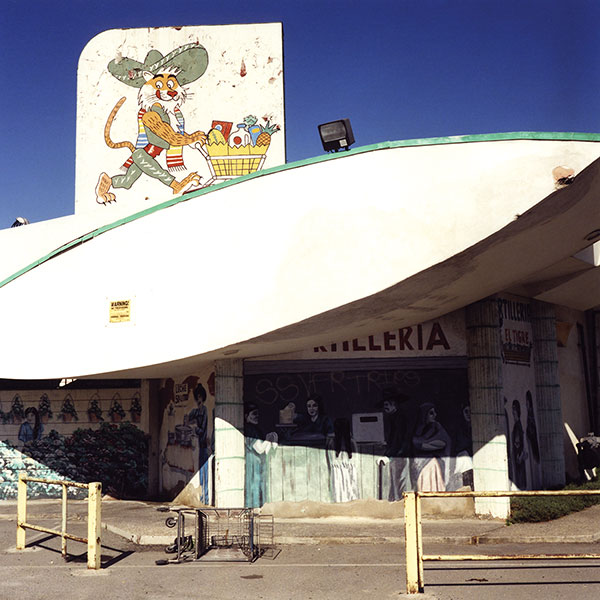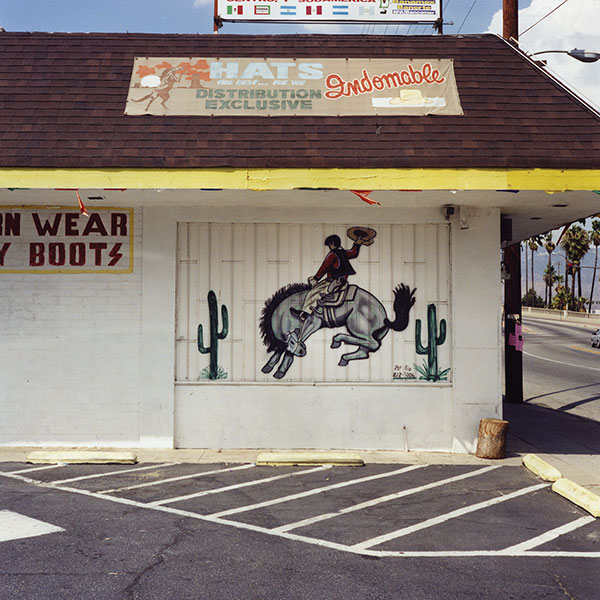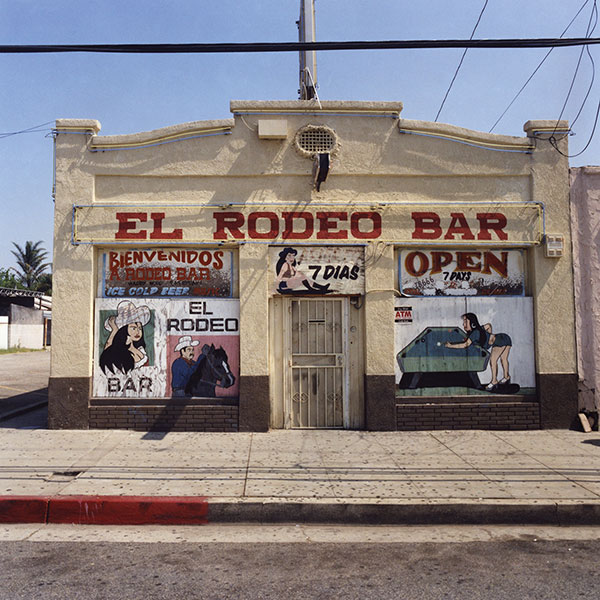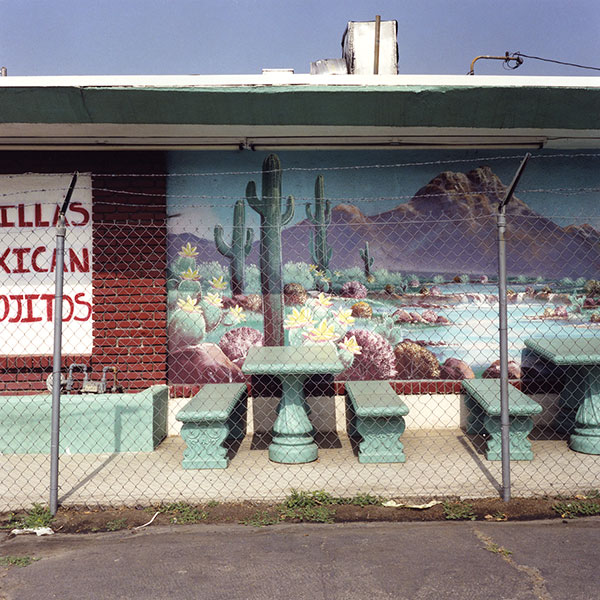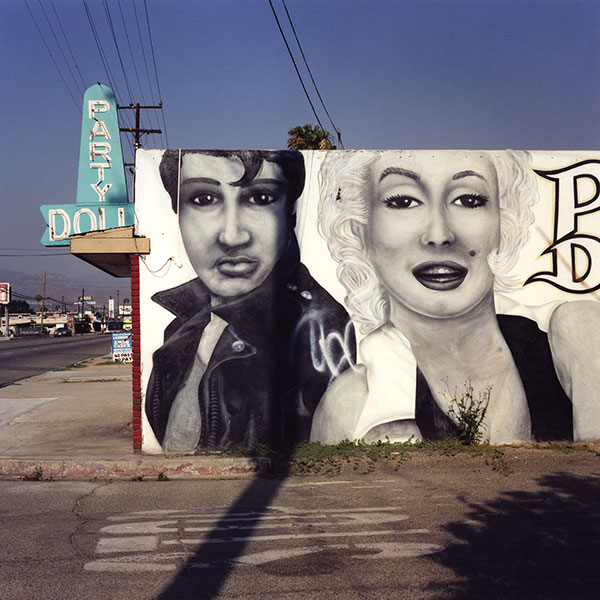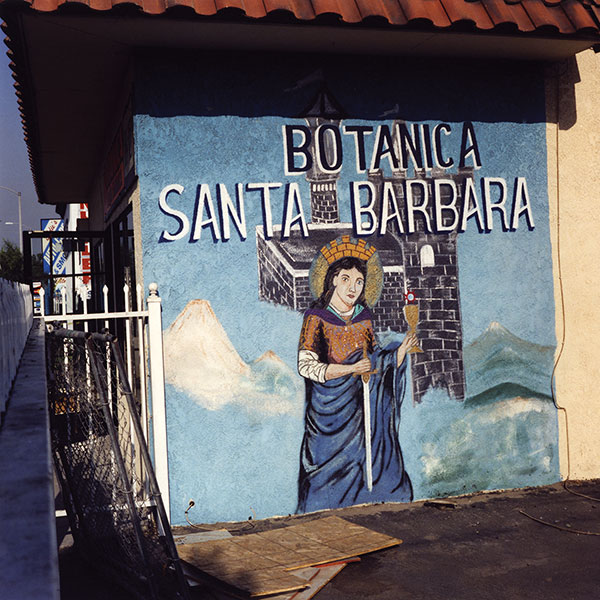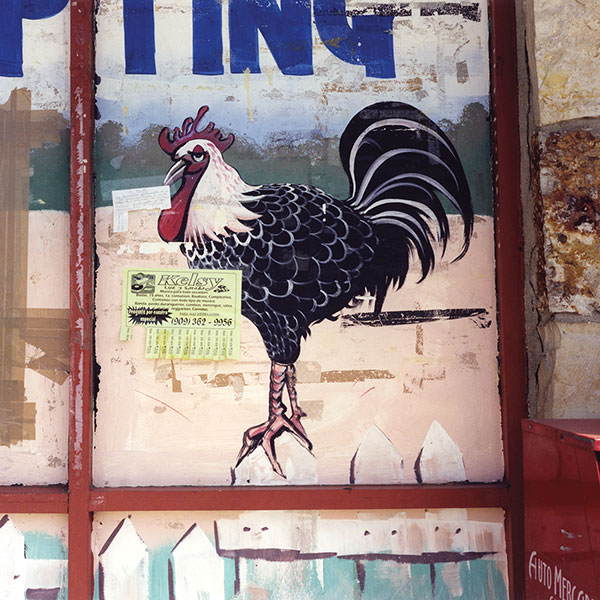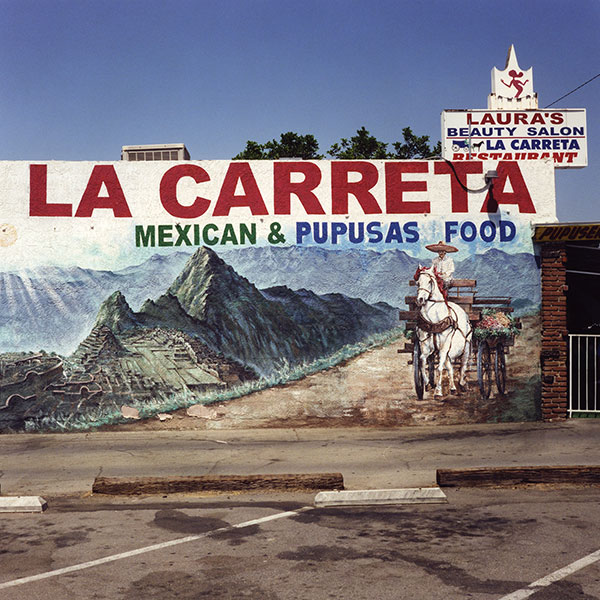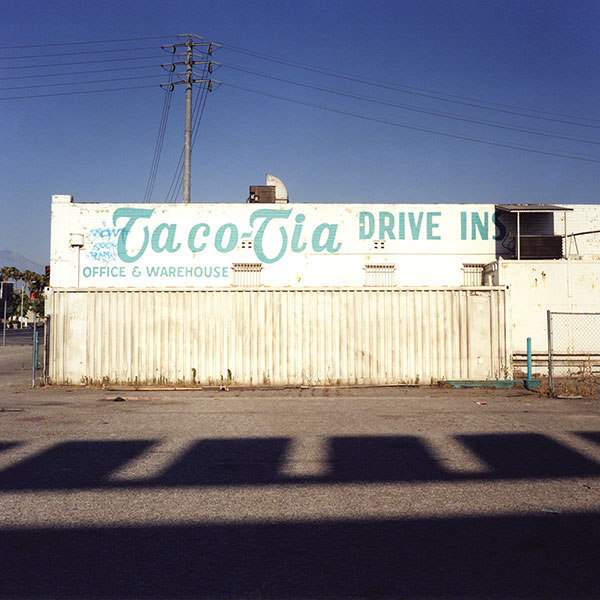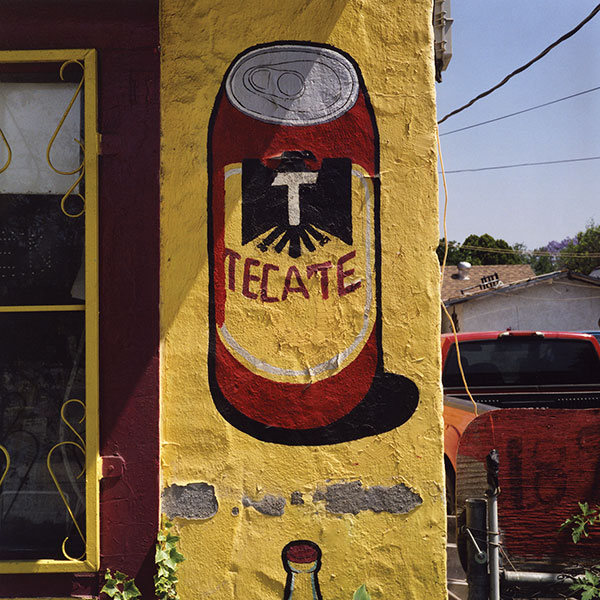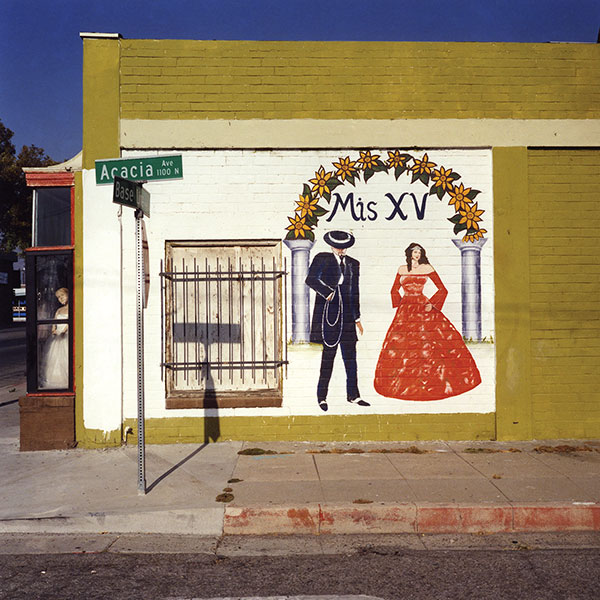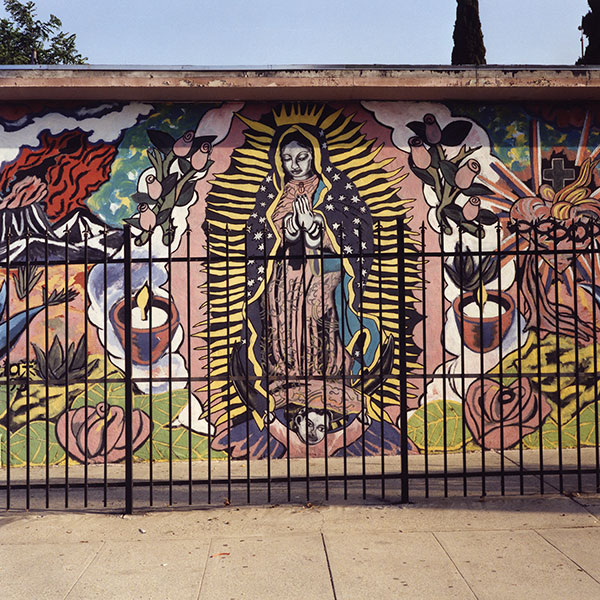Vital Signs
A poet and photographer join together to celebrate the rough beauty of San Bernardino.
BY The Editors

San Bernardino—a town of about 200,000 residents in Southern California, many of them working-class Latinos—is perhaps better known for its urban blight and the bankruptcy it filed in 2012 than for its poetry.
But Juan Delgado, who was born in Mexico and grew up in San Bernardino County, has paired with photographer Thomas McGovern, a colleague at California State University, San Bernardino, to celebrate the raw, unlikely beauty of their hometown. The result is the book Vital Signs, a gorgeous collection of poetry and photography that never shies away from the harsh realities of the community. McGovern calls it an “overarching love story to San Bernardino.”
Vital Signs takes as its visual subject the brightly colored hand-painted signs and murals that mark so many buildings in the area. The signs—which don’t seem to be regulated, unlike those in more affluent areas—are always in flux: going up, embellished, painted over. “They are emblematic of this place and culture,” says McGovern. “Being able to paint what you want to paint,” says Delgado, “it’s like the Wild West.”
The signs can be transitory in more ways than one. One of the first signs McGovern photographed was atop El Tigre Market—a decrepit building at odds with its jaunty mascot, a cartoon tiger that “wears a tiny sombrero and sarape,” Delgado writes. When McGovern went back a few years later, the building and its accompanying sign had been demolished, no evidence of its existence remained. “That was the experience that galvanized this project for me,” he says. “If I don’t make these pictures, then no one will remember that it was there.”
Click images for larger versions.
El Tigre Market
As apparent as the rest, the asphalt cracks
are crowded with yellow weeds, the rust goes
beyond its bleeding color, and the lot's rails,
battered by cars, cast larger bars by noon.
McGovern didn’t include any people in the photographs, a deliberate decision that contributes to the feeling of desolation, but he was very interested in the foreground of the picture, he says: “the sidewalks and weeds and gum, the stains on the sidewalk, the traces of thousands and thousands of people who have been there.”
And while one feels the absence of these people acutely in the photographs, they are front and center in Delgado’s poetry. Whether it’s the Virgin Mary, drawn as a figure of resistance “fending for herself like wild mint” alongside the hot dusty road in “A Point West of Mount San Bernardino,” or the little boy who spots a girl his own age sleeping in a crate near “where the trash bins bred fruit flies” in “Crates,” the flesh-and-blood concerns of characters resonate beyond the page.
Click images for larger versions.
A Point West of Mount San Bernardino
For Father Bob
I.
By the road she hovers in heat waves,
propped up on a cinderblock wall,
revived by mixed house paints,
fending for herself like wild mint.
With one or two exceptions, there is no direct correspondence between each poem and photograph. Delgado and McGovern wanted to create a “third experience,” as Delgado says, “reading the poems, the photographs, together.”
But that’s not to say there are no commonalities. Delgado’s poems are filled with references to walking, to journeys of all kinds. (In “The Evidence Is Everywhere,” he pays homage to John Clare, reimagining Clare’s twin sister as living in San Bernardino. “Clare was always an outsider. And I related to this idea that you can always be a stranger in your own home.”) Delgado observes: “Street art depends on walking, not driving by. It’s the journey I like to write about, never quite getting there…. I don’t think of writing as an escape from the world, but as something that allows you to situate yourself into the world and comment on it.”
Click images for larger versions.
The Evidence is Everywhere
I.
The Santa Anas, childlike and profound,
blanket me; I see the dust stirring the valley
and clouding downtown San Bernardino;
I feel the sting of your loss.
Click images for larger versions.
Peculiar Properties
On my cutting board, I discovered them,
the tiniest of ants, roaming dots of lead.
At first, they were too few to classify, hiding
under crumbs, these scavengers of leftovers.
Admiring their labor, I immediately granted them
citizenship, these tailgaters of a kitchen's routines.
Click images for larger versions.
Manuela
For Ofelia Camacho Delgado
She wakes to the odor of sheep,
trying to rub it off her hands.
Dressed up in her native colors,
standing by a tourist van, she is
a dandelion, golden like the alpaca
woven buttons of her sweater.
She is done with the tourists
taking her photo, holding a baby lamb.
All images copyright Thomas McGovern.
The editorial staff of the Poetry Foundation. See the Poetry Foundation staff list and editorial team masthead.



